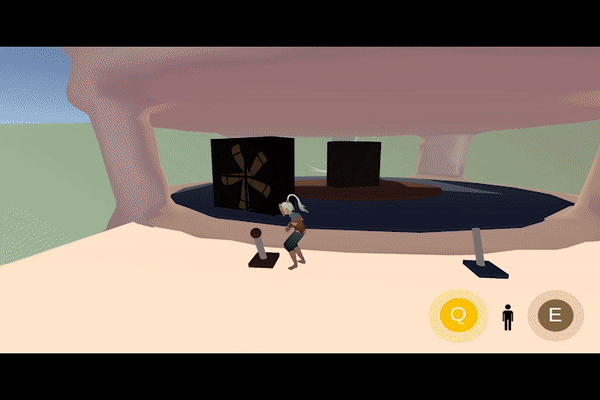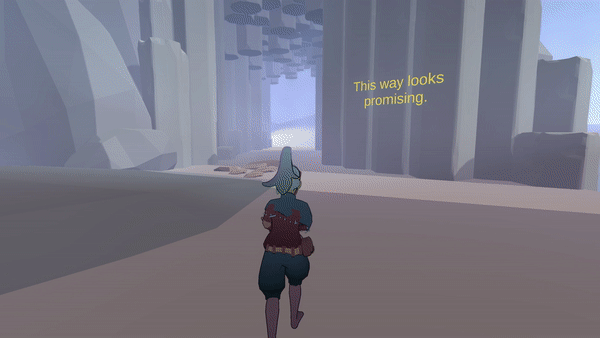Documented Development Process
Team Charter
Design
Pre-Development
Sept 2019 - April 2020

.png)
.png)
.png)
.png)

Prototyping


Alpha
.png)

Gold Master
.png)

Beat Map


GDD


Task List


Design Breakdown




Gameplay Showcase

Player State Mechanics Showcase

In-World Text

Team Photo

SandStone
3D Puzzle Narrative Game
Capstone Project
Sheridan College
Sept 2019 - April 2020
Design Summary:
Player Skills:
1. Puzzle-Solving (mental skill)
Puzzle elements are built into the 3D environment and can be interacted with by the player or other puzzle elements. Players can deduce puzzle solutions by observing their surroundings. Each player state (Human, Sand, Stone) is challenged differently, and often simultaneously, by these puzzles.
2. Timing (physical skill)
Some puzzle elements require players to time their interactions accordingly, like rotating fans, moving onto moving platforms, and resisting gusts of wind.
Game Pillars:
1. Useful and Engaging Player States.
Each state has unique uses and constraints in regards to solving puzzles. Differences are perceived visually and through game feel.
2. Emotional Narrative.
In-World text is used to convey a textual narrative to the player. This text also serves to guide the player forward and promote exploration through optional narrative "collectibles".
3. Vertically-built Levels.
Puzzles built into the environment encourage vertical-thinking and terrain traversal while supplementing our core mechanic of wind riding. The biggest threat to our player is falling, and a vertical environment allows us to control how largely the player is perceiving this threat at any time.
Player State Balancing:
1. Human State
Uses
> can interact with levers
> fastest walk speed
Constraints
> is susceptible to wind
2. Sand State
Uses
> can pass through small spaces
> light - can be carried by wind
> slow fall
Constraints
> cannot interact with levers
> slow walk speed
3. Stone State
Uses
> can fall on pressure plates to activate
> heavy - cannot be pushed by wind
> fastest fall speed, straight down
Constraints
> cannot interact with levers
> slowest walk speed
In-World Text:
In-World text types itself out when the player is within range, and despawns a couple seconds after the player exits this range. The camera allows players to zoom and rotate, making in-world text readable no matter the player position.
Camera:
The 3rd person camera has zoom and rotate functions to supplement in-world text, beautiful art, and vertical environmental puzzles. A camera collider function was chosen over a camera occlusion function to support in-world text and player immersion within the sculpted 3D environment.
Controls:
Using Q and E to switch in and out of Sand and Stone state was best received during playtests due to its accessibility on a keyboard and low button count (as opposed to 1, 2, 3). It was always the most intuitive, as players learnt it the quickest during on-boarding.